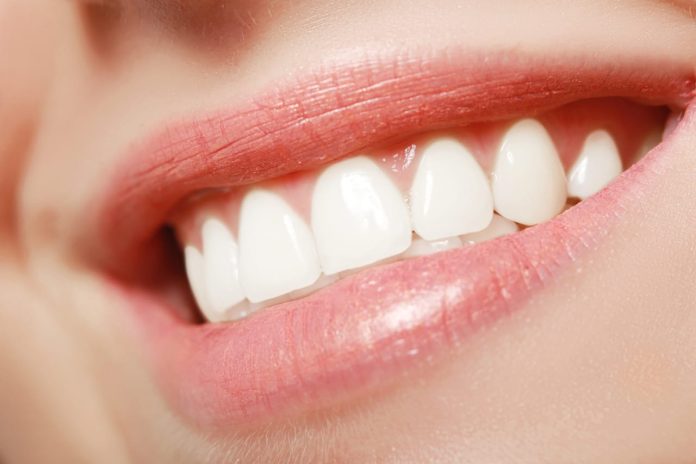Did you know about 87% of people under the age of 35 feel embarrassed or self-conscious about their smile? The smile, much like the eyes, is a window to the soul. What can change to make people feel more secure about their smiles?
Muscle relaxant injections may not be your first thought in response to this problem, but they can make a big difference. Factors that may contribute to a purportedly “unattractive” smile can include wrinkles, asymmetry, or a “gummy” smile. Muscle relaxant injections can help improve these factors and can even treat certain health conditions, like teeth grinding or clenching.
If you feel that you have an unattractive smile or know someone who feels the same way, it might be time to take a look at muscle relaxant injections. If you’re interested, then don’t waste any more time! Keep reading more about what muscle relaxant injections can do for you and how they work below.
What Are Muscle Relaxant Injections?
Muscle relaxant injections, also known as anti-wrinkle injections, have become popular throughout the realm of cosmetic treatments in recent years. They work throughout the face to treat crow’s feet, forehead wrinkles, laugh lines, and other fine lines and wrinkles.
They can also work on other parts of the body away from the face such as the underarms, hands, and feet, to subdue excessive sweating. More than that, muscle relaxants can treat a variety of painful health conditions. These conditions can range from muscle spasms to migraine headaches.
In fact, muscle relaxants were long used to treat pain, and only much later in their history were they incorporated in cosmetic treatments. This is because, when treating patients with muscle spasms in the face, doctors noted that these injections also had implications in smoothing out fine lines and wrinkles.
How Do Muscle Relaxant Injections Work?
In order to understand how these injections work, it’s important to dive a little bit into their scientific underbelly. Muscle relaxants work primarily because they are able to paralyze the muscle they inject into.
In normal muscle, nerve cells release a neurotransmitter molecule known as acetylcholine. This acetylcholine is responsible for causing muscle contractions and allows you to move your muscles at your own will. Too much acetylcholine, however, can lead to overstimulation of muscles and can result in muscle spasms.
When there is not enough acetylcholine, muscles will fail to contract. This is what muscle relaxant injections aim for. Muscle relaxants are able to prevent muscle contractions by targeting neurons in the muscle.
When these neurons are influenced by a muscle relaxant, such as Botox (botulinum toxin), these neurons are unable to release acetylcholine to the muscle. As such, without acetylcholine, the muscle will not be able to contract. This is why after receiving muscle injections, people may have a hard time moving certain muscles in their face for a period of time.
Muscle relaxants do not spread throughout the body when injected into facial muscles, or any muscle for that matter. Instead, they remain local to the muscle injection site. They are also not permanent and tend to last around 3 to 4 months.
Those who receive muscle relaxants will find that their face has become more taut and youthful in appearance. Those who are happy with the results can come back to receive more muscle relaxant injections every few months to maintain their look.
Administering Muscle Relaxant Injections
A thin needle administers these injections, so you may feel brief and small pinches of pain during treatment. However, the pain is minimal when taking an over-the-counter pain reliever before coming in for your appointment.
Depending on the site of your face or body that is being treated, you may need 4 to 6 injections to get optimal results, but this range can vary. A significant benefit of getting injections is that the procedure only takes a few minutes to complete, especially if the treatment area is small.
Muscle relaxant injections are safe and have minimal side effects. While they begin to work immediately, peak results are often seen a few days after the first injections. You can find them at any cosmetic treatment office, and even some dentistry practices, such as Smile Solutions® home of dentistry.
Some common side effects include bruising or soreness around the injection site. Some may experience a headache or drooping eyelids, especially when muscle relaxants affect the forehead. None of these side effects are serious, and they usually go away anywhere between a few hours to a few days.
Most people will have no problems getting muscle relaxant injections, however, there are some who should delay or avoid receiving them. Pregnant or breastfeeding women should wait until they stop breastfeeding to get muscle relaxant injections. Those who suffer from certain muscular disorders should avoid these injections altogether.
Using Muscle Relaxant Injections to Improve Your Smile
If you wanted to improve your smile with facial injectables, where would you start? Is the procedure the same for those with gummy smiles as it is for those with laugh lines or temporomandibular disorders (TMD)?
Let’s take a closer look at what muscle relaxant injections can treat and how.
The Causes and Solutions of a Gummy Smile
A gummy smile is a large amount of gingival or dental gum showing above the upper teeth when smiling. Normally, only small amounts of the gum appear when smiling. However, some people can become self-conscious if they notice that their smiles show off a disproportionate amount of gingiva.
No one wants to feel bad about their smile, so how can this problem improve with injectables? First, let’s take a look at what causes a gummy smile.
In some cases, the gum above the upper row of teeth may actually be enlarged on a cellular level. This is gingival hypertrophy. This hypertrophy occurs from certain medications.
In severe cases, gingival hypertrophy may need surgical correction. This may be the case if you are genetically predisposed to have a larger upper jaw. This is an issue with the bones.
On the other hand, there may be a more superficial problem with the upper lip which can cause a gummy smile. For example, if your upper lip is unusually short, this can lead to an exposure of more gingiva than normal. Small teeth can also be another cause of gummy smiles.
Now that we’ve seen the possible causes of a gummy smile, what is the treatment plan?
Treating a Gummy Smile With Injectables
When treating a gummy smile with injectables, the focus is the upper lip. By injecting into the muscles of the upper lip, they will remain relaxed when smiling. This ensures that the upper lip reveals little gingiva.
Those who get this procedure usually see great results, especially since the results appear very quickly. The procedure is quick and involves minimal pain. Those who want to keep their gummy smiles at bay are able to get muscle relaxants injected every few months to maintain their look.
Compared to surgery, muscle relaxants are a great and relatively affordable way to improve your gummy smile.
Fixing Temporomandibular Disorders With Injectables
Temporomandibular Disorders (TMD) can cause people a world of pain. TMD impact the joint that connects your jaw to the temporal bones of your skull. They can be extremely painful and cause migraine headaches.
TMD can be caused from trauma such as car accidents, but they may also be caused by teeth grinding or clenching. Often, those suffering from TMD do not notice they are clenching their teeth or only clench their teeth while they are asleep. This habit frequently is associated with underlying stress.
More than being painful and often long-lasting, TMD can also bulk up or swell the muscles of the jaw and face, which can lead to a less attractive smile. Thankfully, muscle relaxant injections can help with this issue.
Targeting the Problem
By targeting the muscles that allow you to clench your teeth, known as the masseter muscles, injectables let these tense and over-worked muscles relax. Using muscle relaxants on the masseter muscles will not prevent you from being able to talk or chew regularly. This will only occur if the procedure is done improperly and too much of the muscle relaxant is injected.
Those who suffer from TMD and receive muscle relaxant injections often see a great improvement in their quality of life. The muscle relaxants inhibit them from grinding or clenching their teeth, which is often the cause of their severe jaw pain.
As the masseter muscles are relaxed, many will find that their migraines associated with their TMD will fade. More than that, the pain associated with the use of their jaw will also lessen. This can allow them to enjoy their life with minimal pain.
Finally, since the injectables are giving their masseter muscles a chance to relax, any swelling or bulk of the muscle should decrease. This will lead to a slimmer jaw and a more attractive smile.
Using Muscle Relaxant Injectables to Treat a Wrinkly Smile
Muscle relaxant injectables are one of the most common treatments for wrinkles. Most wrinkles are caused from repeated movements over a long period of time such as raising the eyebrows or smiling. Other types of wrinkles are caused by sun damage.
Unfortunately, muscle relaxant injectables do not work very well on wrinkles caused from sun exposure. However, they have great implications for treating ordinary wrinkles.
If you have deep forehead wrinkles or crow’s feet from years of furrowing your brows, muscle relaxants can help with that. By paralyzing the muscles in the location of the wrinkles, the area will be able to relax and the wrinkles will lessen in appearance. In cases where fine lines are involved, these lines may disappear entirely.
With age, the lines that form around the mouth when smiling tend to get deeper and more wrinkled. Vertical wrinkles may also appear around the lips for those who purse their lips often, such as smokers. Those who have excessive wrinkles around their mouth when smiling may feel insecure and might try to smile less often.
With a few injections of muscle relaxants, these fine lines and wrinkles can be greatly reduced. These results can lead to younger and firmer-looking skin. This is not to mention the confidence that is obtained from having a more attractive smile.
What to Do After Getting Injectables
Getting muscle relaxant injectables can be great for improving your smile, but a bit of aftercare is important for getting the right results.
Immediately after getting your injectables, be sure to stay upright for at least an hour, but 4 or more hours is preferred. This allows the injectables to remain exactly where they were injected in your tissue. If the injectables are displaced, they may paralyze the wrong muscle and ruin the result.
For the same reason, avoid touching, rubbing, or putting unnecessary pressure on your injection site. This means, especially if you had your lips injected, you should avoid drinking from straws, kissing, or harsh skincare techniques, such as exfoliation.
It is also recommended that you do not do any intense exercises or raise your body temperature after getting injectables. This is because sweat could potentially infect the needle puncture sites in your skin.
How Muscle Relaxant Injections Can Help Your Smile
If you’re self-conscious about your smile, you now know that muscle relaxant injections are a great and easy solution. With minimal side effects and no downtime, you can improve your smile effortlessly.
So, why not get started with injectables? To learn more, explore more of our site.









